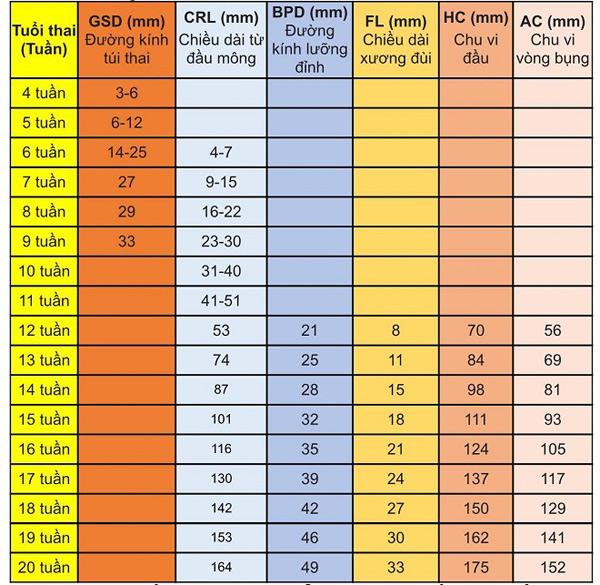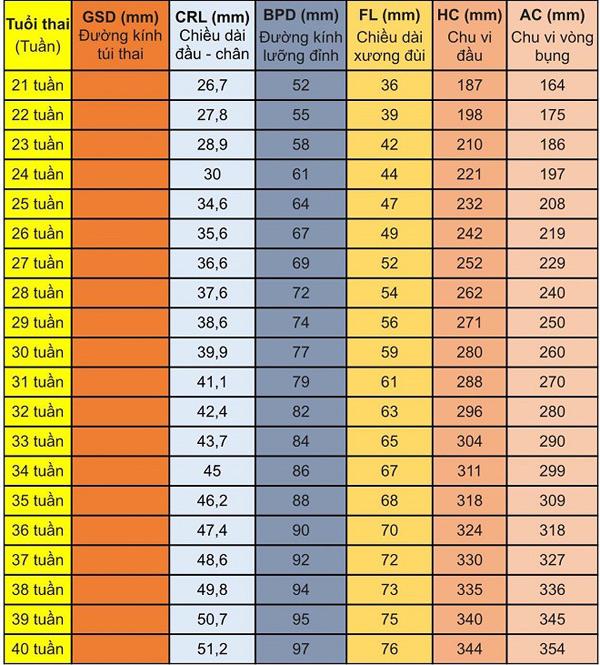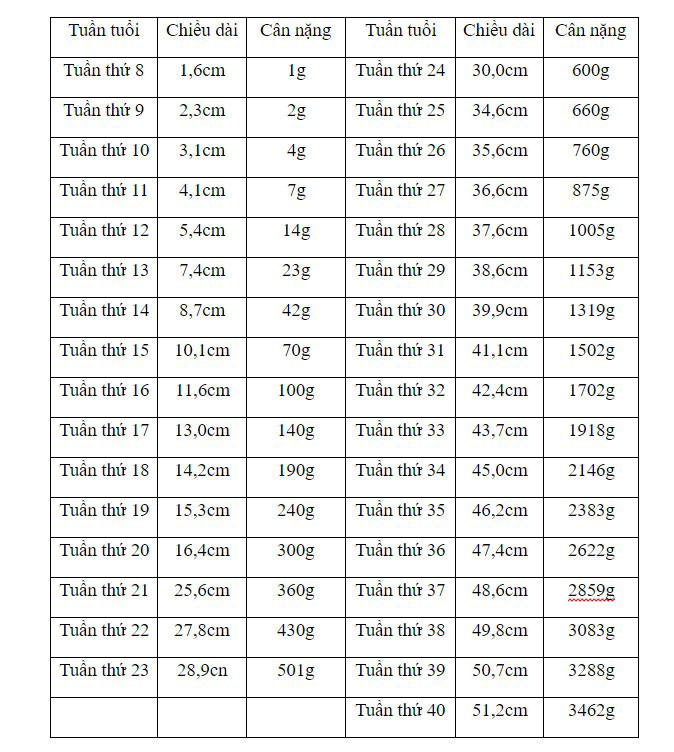Fetal indicators reflect the true development of the baby in the womb, from the size of a sesame seed to a cute baby ready for birth. Regularly monitoring these indicators helps expectant mothers detect any abnormalities in the fetus early, allowing for timely intervention. Below is the most detailed weekly fetal development tracking chart.
What are the fetal indicators that mothers need to know?
There are many terms for fetal development indicators. Huggies introduces some key terms and abbreviations for important fetal indicators!
- GA (Gestational age): The age of the fetus, calculated from the first day of the last menstrual period
- CRL (Crown rump length): The length from head to rump. In the first half of pregnancy, babies are often curled up, making it difficult to measure head-to-toe length. Only in the later weeks is this replaced by head-to-toe length.
- BPD (Biparietal diameter): The largest diameter of the baby’s head at the transverse section
- FL (Femur length): Length of the thigh bone
- EFW (Estimated fetal weight): Estimated weight of the fetus
- GSD (Gestational sac diameter): The diameter of the gestational sac measured in the early weeks, before organ formation begins.
Other symbols
- TTD (Transverse trunk diameter): Abdominal transverse diameter
- APTD (Anterior-Posterior thigh diameter): Front and back abdominal diameter
- HC (Head circumference): Head circumference
- AC (Abdominal circumference): Abdominal circumference
- AF (Amniotic fluid): Amniotic fluid
- AFI (Amniotic fluid index): Amniotic fluid index
- OFD (Occipital frontal diameter): Occipital bone diameter
- EDD (Estimated date of delivery): Estimated delivery date
Fetal development tracking chart weeks 1-20
In the early weeks of pregnancy, the embryo is not yet formed, and the only measurable indicator is the amniotic sac diameter. From around week 6, the embryo forms and gradually develops by 12 weeks. From this point, fetal development indicators are tracked in full.

Fetal development tracking chart weeks 21-40
This is the period when the fetus develops and completes rapidly. Refer to the chart below to see if your baby meets these indicators!

Standard fetal weight chart
The weekly weight of the fetus is also a crucial factor in assessing the baby’s development. Here is the standard fetal weight chart for reference!

Throughout the 40 weeks in the womb, the fetus continuously changes and develops. If your baby doesn’t “meet the standard” for one indicator, don’t worry too much, as each baby’s development varies.
